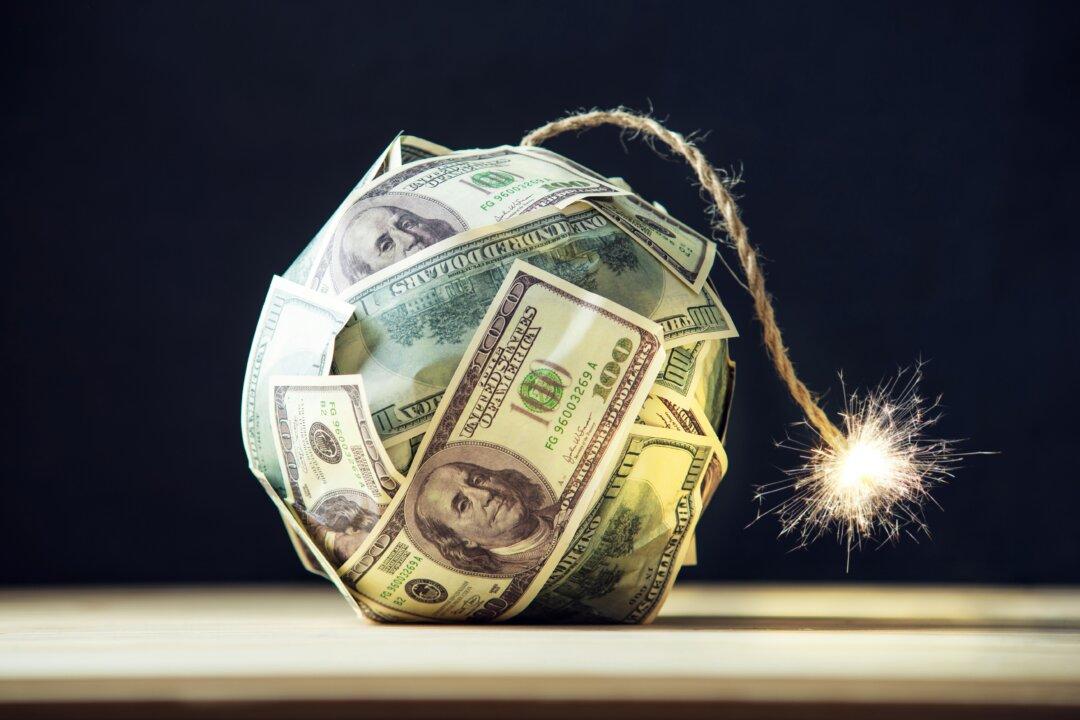The U.S. Dollar Index has lost 10 percent from its March highs, and many press comments have started to speculate about the likely collapse of the U.S. dollar as the world reserve currency due to this weakness.
These wild speculations need to be debunked.
The U.S. dollar year-to-date (as of August) has strengthened relative to 96 out of 146 currencies in the Bloomberg universe. In fact, the U.S. Fed’s trade-weighted broad dollar index has strengthened by 2.3 percent in the same period, according to data compiled by Bloomberg.
The speculation about countries abandoning the U.S. dollar as a reserve currency is easily denied. The Bank for International Settlements reports in its June report that global U.S.-dollar-denominated debt is at a decade high. In fact, U.S.-dollar-denominated debt issuances year-to-date from emerging markets have reached a new record.
China’s dollar-denominated debt has risen as well in 2020. Since 2015, it has increased 35 percent while foreign exchange reserves fell 10 percent.
The U.S. dollar index (DXY) shows that the U.S. currency has only really weakened relative to the yen and the euro, and that’s based on optimistic expectations of European and Japanese economic recovery. The Federal Reserve’s dovish announcements may be seen as a cause of the dollar decline, but the evidence shows that the European Central Bank (ECB) and the Bank of Japan (BOJ) conduct much more aggressive policies than the United States while economic recovery stalls.
Recent purchasing manager index (PMI) declines have shown that hopes of a rapid recovery in Europe and Japan are widely exaggerated, and the Daily Activity Index published by Bloomberg confirms it. Furthermore, the balance sheet of the ECB at the end of August is more than 54 percent of the eurozone GDP and the BOJ’s is 123 percent versus the Federal Reserve’s 33 percent.
What we have witnessed between March and August has just been a move back from an overbought exposure to the DXY index due to the severity of the crisis, as investors increased positions in safe havens in February and March, only to reverse the move as markets and the economy recovered.
The lesson most governments should learn is that economies don’t become more competitive or deliver stronger growth and exports with a weak currency. Emerging markets have shown in the past years how a weak currency doesn’t help, and the eurozone has had a weak euro versus the U.S. dollar for years just as its economy delivered disappointing growth.
The reason why the U.S. dollar’s world reserve currency status isn’t at risk is simple: There are no contenders. The euro has redenomination risk, and the constant political and economic concerns about the union’s solvency make the currency weaken, as the historical performance has shown. It tends to strengthen relative to the U.S. dollar when investors place unjustified hopes on the eurozone growth only to weaken afterward when poor growth adds to an overly aggressive ECB policy, with negative rates and massive money supply growth.
The yuan can’t become the world reserve currency if the country maintains capital controls and concerns about legal and investor security remain. The China Central Bank (PBOC) is also extremely aggressive for a currency that is only used in 4 percent of global transactions according to the Bank for International Settlements.
We’re living in a period of unprecedented financial repression and monetary expansion. The U.S. dollar reserve status grows in these periods where countries ignore real demand for their domestic currency and decide to copy the Federal Reserve policies without understanding the global demand for their currency. When the tide turns, most central banks find themselves with poor reserves and lower demand for domestic currency risk, and the position of the U.S. dollar as reserve currency strengthens.
This isn’t a year of U.S. dollar weakness or the end of its supremacy as reserve currency. What we are witnessing is a generalized fiat currency debasement through extreme monetary policy. That’s the reason why gold and silver continue to rise despite hopes of an economic recovery that seems to be stalling.
The U.S. dollar will likely remain the most-demanded fiat currency, but the excessive monetary stimulus will ultimately damage the confidence in most fiat currencies.





